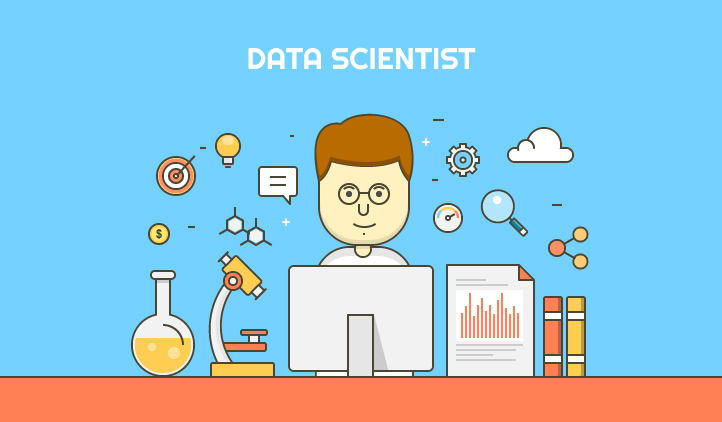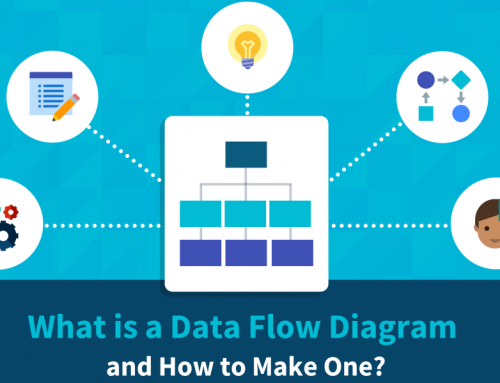Data Scientists: What Is a Data Scientist? What Do They Do?
Data scientist is one of the most popular professions in society today. But do you know what a scientist is, what a data scientist does in a company and how to become a data scientist? In this article, we will take a closer look at data scientists and try to answer the above questions.

Data Scientists
What is a Data Scientist?
Data scientists are big data managers who collect and analyze large amounts of structured and unstructured data. The role of the data scientist combines computer science, statistics and mathematics. They analyze, process and model data and then interpret the results to create executable plans for companies and other organizations. As analysts, they use their skills in technology and social science to spot trends and manage data. They use industry knowledge, background understanding, and skepticism about existing assumptions to find solutions to business challenges.
The job of a data scientist often involves making sense of messy, unstructured data from sources like smart devices, social media feeds and email that can’t be neatly put into a database.
However, technical skills are not the only thing that matters. Data scientists often exist in business environments and are responsible for conveying complex ideas and making data-driven organizational decisions. Therefore, it is important that they become effective communicators, leaders and team members and high-level analytical thinkers.
One of the tasks of experienced data scientists is to develop company best practices, from cleaning up data to processing and storing it. They collaborate cross-functionally with other teams within the organization, such as marketing, customer success, and operations. They are very popular in today’s data – and technology-intensive economy, and this is clearly reflected in their wage and employment growth.
What are the responsibilities of data scientists?
Data scientist responsibilities may include:
- Solve business problems through undirected research and ask open-ended industry questions;
- Extract a large amount of structured and unstructured data, query structured data from relational databases using programming languages such as SQL, and collect unstructured data through Web capture, API and survey;
- Use sophisticated analytical methods, machine learning, and statistical methods to prepare data for prediction and specification modeling.
- They thoroughly clean the data, discard irrelevant information, and prepare the data for pre-processing and modeling;
- Responsible for performing Exploratory Data Analysis (EDA) to determine how to handle missing data and look for trends or opportunities;
- Responsible for discovering new algorithms to solve problems and building programs to automate repetitive tasks;
- Responsible for communicating forecasts and findings to management and IT through effective data visualization and reporting;
- Make reasonable recommendations for cost-effective changes to existing procedures and policies;
Different companies have different views on data science job tasks. Some view their data scientists as data analysts, or combine their responsibilities with data engineers while others require top analytics experts proficient in machine learning and data visualization.
What’s in a data scientist’s toolbox?
Data scientists often use these terms and techniques:
- Data visualization: Presenting data in a picture or graphical format for easy analysis;
- Pattern recognition: The technique of identifying patterns in data, often used interchangeably with machine learning;
- Machine Learning: This is a branch of artificial intelligence which is based on mathematical algorithms and automation;
- Data preparation: The process of converting raw data into another format for easier use;
- Deep learning: It is an area of machine learning research that uses data to model complex abstractions;
- Text Analytics: This refers to the process of examining unstructured data to gather business-critical information.
What is the difference between a data scientist and a data analyst?
The jobs of a data scientist and a data analyst may seem very similar because both can spot trends or patterns in data that can provide organizations with new ways to make better operational decisions. However, the former tend to have more responsibilities and are generally considered more senior than the latter. Data scientists typically ask themselves questions about data, while data analysts may support teams that have set goals. Data scientists may also spend more time developing models, using machine learning or in combination with advanced programming to discover and analyze data. In addition, many data scientists can start their careers as data analysts or statisticians.
Steps to Become a Data Scientist
If you’re interested in pursuing a career in data science, consider these six common steps:
- Bachelor’s degree in data science or closely related field;
- Learn the skills you need to become a data scientist;
- Consider a specialization;
- Get your first entry-level data scientist job;
- Review additional data scientist certifications and post-graduate learning;
- Master of Science in Data Science.
Conclusion
Thank you for reading our article and we hope it can help you to have a better understanding of data scientists and their skills and responsibilities in companies. If you want to know more about data scientists, we would like to advise you to visit SQLFlow for more information. Thanks again! (Published by Ryan on Apr 24, 2022)
If you enjoy reading this, then, please explore our other articles below:



